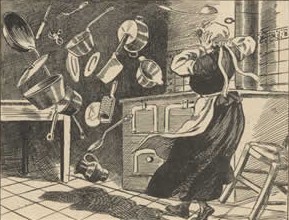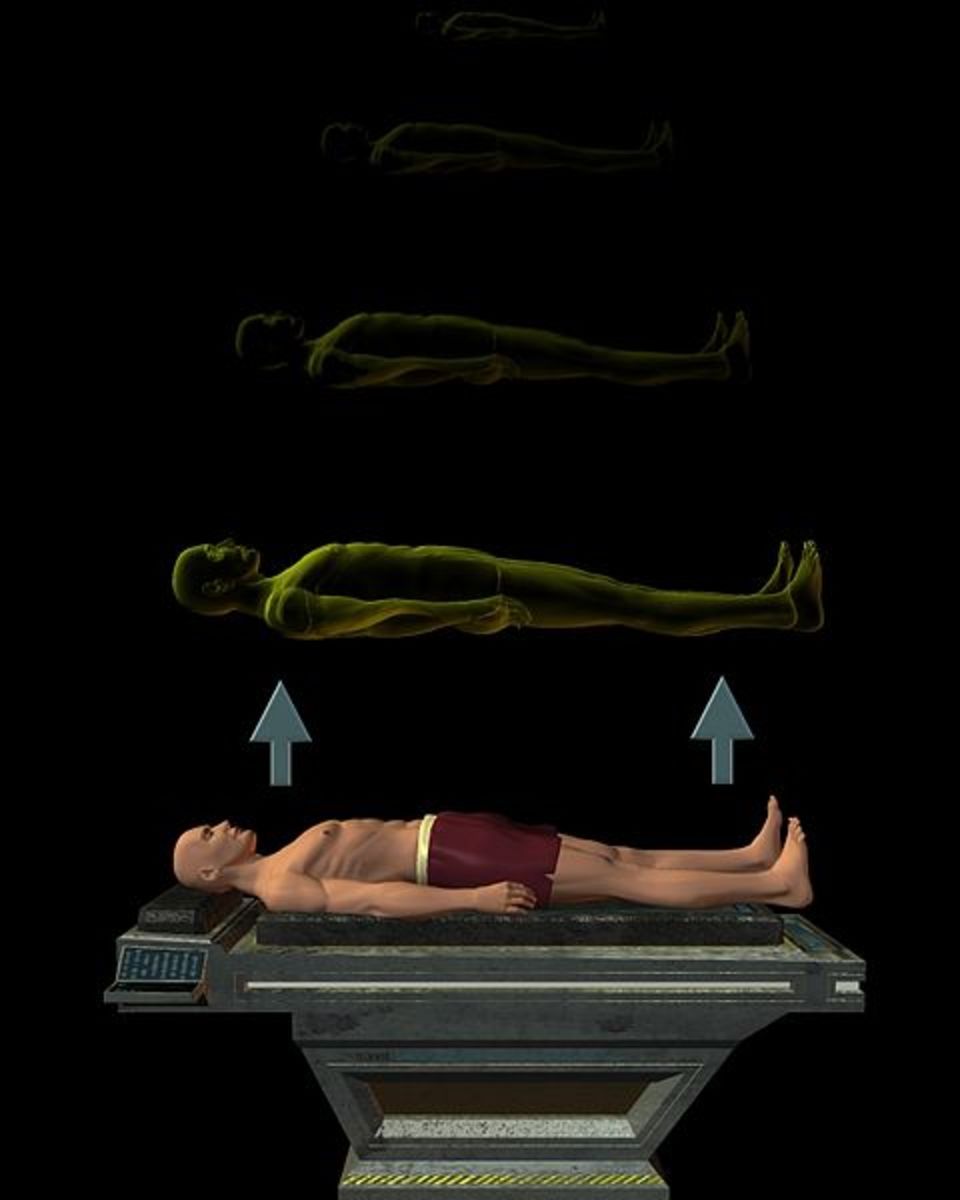The Paranormal - Fact or Fiction - Poltergeists

Poltergeists
Poltergeists seem more often or not, to be associated with a person – usually young. The name is derived from the German for noisy ghost – ‘poltern’ as in noisy and ‘geist’ as in spirit or ghost – as they are so often associated with the movement of objects that make noise, such as glasses moving off shelves and breaking.
Poltergeists have been the subject of many films and stories and have been subtly linked to possession as it seems that in a great many instances, the activity has been associated with a person rather than the place itself, especially with The Entity and the film Poltergeist.
Case 1 : Eleonore Zugun
Eleonore Zugun was born in Talpa, Romania on 24th May 1913 to a peasant family.
In February of 1923, Eleonore just nine years old, set off to her grandmother’s house in Buhai and on the way, found some money by the side of the road. When she got to her grandmother’s town, she spent what she had found on sweets and ate the lot.
Her one hundred and five year-old grandmother—reputedly a witch, heard her arguing with her cousin over the sweets and warned Eleonore that the money had been left there by the devil to tempt her and now she would not be able to be rid of him.
The next day, the poltergeist activity started.
Stones flew at the house and windows were broken. Small objects near to Eleonore would rise and fly about and her superstitious grandmother, convinced she was possessed by the devil (Dracu in Romanian, from where we get Dracula), sent her back home.
Three days later, the activity began again. A jug of water was reported to have risen into the air and floated several feet without spilling a drop. A porridge bowl flew at a guest, hitting him on the back of the head, causing a nasty wound.
Refuge was found for her at a monastery in Gorovei where the activity continued unabated and sadly, Eleonore was locked in a lunatic asylum.
Fortunately, newspaper reports of her story had alerted the eminent Austrian Psychical researcher, Fritz Grunweld in Charlottenburg, Germany and with the help of Kubi Klein, a journalist form Czernowitz, they managed to get her sent back to the monastery where she could be properly observed.
Between the 9 and 18 of May, 1925 Grunewald observed the girl and took detailed shorthand notes of the amazing phenomena which took place. The movement of objects were the most common type of phenomenon, ranging from the slow movement of a large pot on the oven, to the violent throwing of things at, or close to people.
Apports – the appearance of object apparently from nowhere were other phenomena Grunewald noticed and there were also occasional knocks. Once or twice, matches were mysteriously set alight and the poltergeist also started slapping the girl.
In July 1925, however, Grunewald died of a heart attack aged forty-one. His notes were edited and by Professor Christoph Schröder in the Zeitschrift für psychische Forschung, vol. I, 1927 and the unlucky Eleonore was once again left in the care of her family, who it seemed were not particularly supportive.
Later that year, she found another protector in the form of an attractive young Viennese woman - the Countess Zoë Wassiliko-Serecki, who was part Romanian herself and had been connected with psychical research for years with an interest in psychoanalysis.
When she visited Eleonore at the monastery of Gorovei in September 1925, she found an uncared for, dirty and very frightened girl. The Countess saw for herself, the bizarre phenomena and wrote a short book about Eleonore's case, later published as Der Spuk von Talpo (Munich, 1926)
By January 1926 the Countess had managed, after complicated negotiations, to take Eleanore to Vienna to live with her and it was there that Eleonore was happy. Before long the Countess had her training as a hair-dresser.
The activity didn’t stop and the Countess kept a diary of events, dividing the phenomena produced by the girl into a number of categories. The movement and apports of items from various rooms in the apartment were not uncommon, even taking place outside in the afternoon sun.
Whilst Eleonore didn’t have the misfortune to be on the receiving end of flying objects, she was getting slapped violently thrown from her bed, had her hair pulled out and her shoes filled with water. Worse, by late march of 1926, her hands were being pricked as if by pins and needles. She would wake some mornings to find actual needles and pins embedded in the flesh of her hands and fingers.
At the end of April of that year, Harry Price, the well known and controversial English psychical researcher came to see and bore witness to a mirror as it floated over a room partition and also watched as bite and scratch marks appeared on Eleonore’s arms and chest. To cap it all, a large rag dog appeared, apparently from nowhere.
So is that conclusive?
Not in the least bit.
It is said that for those who believe, no proof is necessary, but for those who do not believe, no proof will ever be enough.
The fact is, the above case was one which was examined during a time when the written word was all that was available. Nowadays, someone's word is not nearly enough. Even if the person recounting the experience, there would still be some amount of scepticism I'm sure.
So perhaps one where there was visible proof. Would that be more believable?
Case two: Annemarie Schneider
This case is of suspected poltergeist activity and took place in Rosenheim, southern Bavaria in 1967.
In the offices of lawyer, Sigmund Adam, some very strange occurrences started where lights would turn themselves on or off and the telephones would ring with no-one at the other end (silent caller), copiers would spill their copy fluid and desk drawers would fly open without having been touched.
During one month, the Deutsche Post installed equipment that recorded telephone calls which were never made and detected over 600 calls to the German speaking clock, a number of which were detected to have been made successively far too quickly for the mechanical dialling mechanism. Lights were also said to shake or swing when Annemarie entered the office.
It was discovered that she had gone through a somewhat traumatic personal event and admitted to suffer from neuroses. She was sent on holiday, during which time, the strangeness stopped, however, it began anew upon her return and she was subsequently dismissed from her post.
As far as this case is concerned, it became a very contentious issue, with many feeling that it was positive proof of the existence of paranormal phenomena, however others claimed this was just a set-up, a stunt for the neurotic Ms. Schneider to garner attention.
The police officers present and others unconnected with the company, such as Friedbert Karger from the Max Planck Institute, gave statements claiming to have witnessed the inexplicable movement of objects and this was the first case of its kind to have film evidence of the phenomena.
Karger's whole perspective on physics changed after investigating the events. “These experiments were really a challenge to physics,” Karger said. “What we saw in the Rosenheim case could be 100 per cent shown not to be explainable by known physics.”
What is more, Annemarie was never caught at any time faking any of it.








